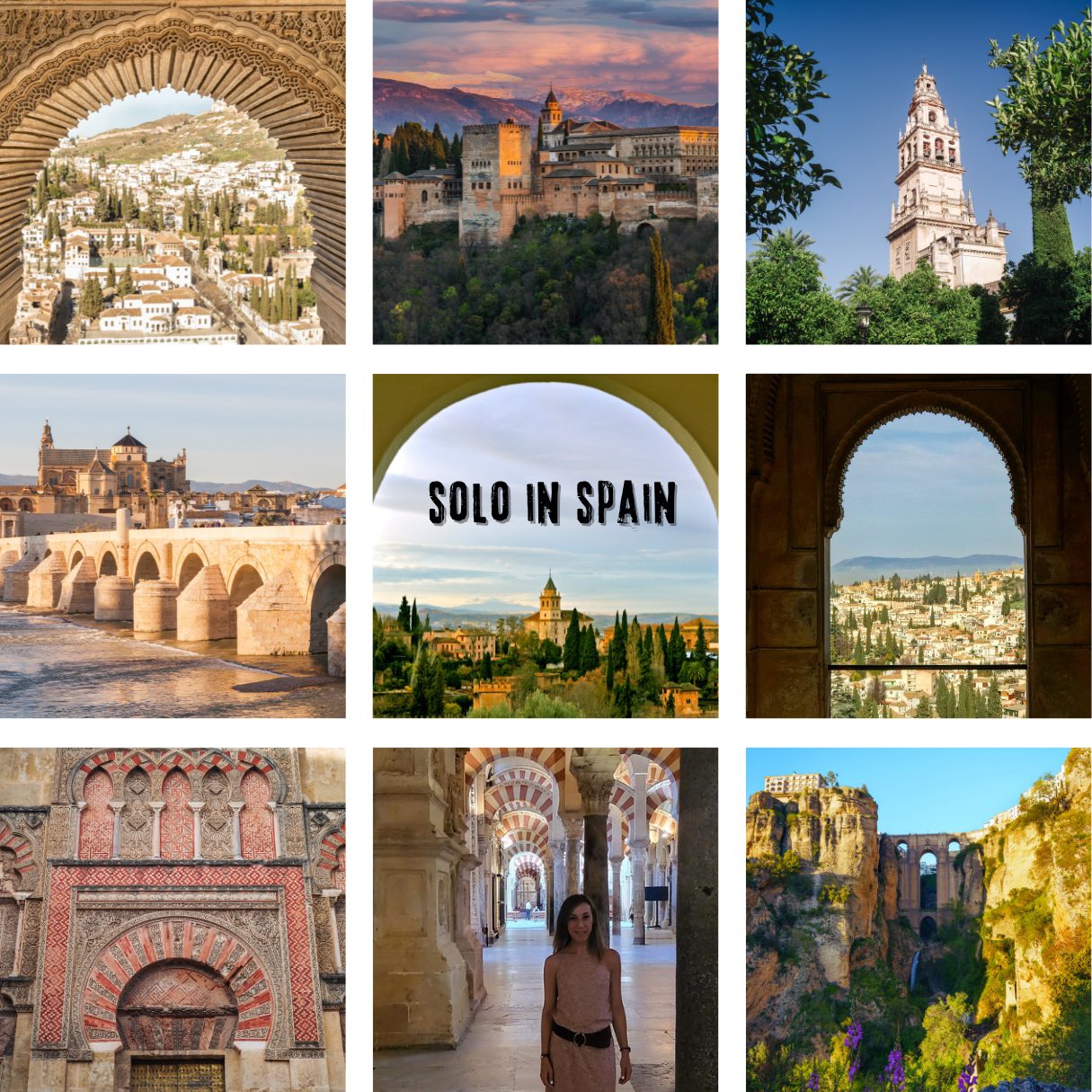
Why the destination is tops for those going their own way
Ilona Kauremszky
On a misty autumn morning in Galicia, a woman in her 50s adjusts her backpack straps, takes a deep breath, and continues along the ancient Camino de Santiago. The trail winds past stone chapels and dew-kissed vineyards. She walks alone—but never lonely.
“I can do this,” she murmurs, passing another pilgrim who smiles in quiet recognition.
Across Spain, more women are reclaiming their independence through travel – and finding the journey some travel insiders suggest leads to transformation. Once overlooked by the industry, solo women travellers over the age of 50 have become one of tourism’s most influential, loyal and fastest-growing demographics.
And if proof were needed that these women are shaping bookings, Explore Worldwide has it.
“Walking the Camino de Santiago has been one of our top sellers among solo travellers, especially women,” says Katy Rockett, regional director for North America at Explore Worldwide. “Spain is very safe for solo women travellers, and one of our most popular solo destinations – whether they’re cycling through Murcia’s apricot groves or joining walking tours in Mallorca.”
The U.K.-based small group adventure company, which has operated since 1981, reports that half of all its travellers are solo, and 72% of those are women. Spain has been in its portfolio since 1986, when Explore Worldwide first launched its “Moorish Andalucia” itinerary. She says, “Having an expert leader and a small group provides both safety and companionship – without sacrificing independence. It’s a fun, supportive way to travel.”
According to a new collaboration between the Tourist Office of Spain in Canada and JourneyWoman, the world’s first solo travel publication for women, this powerful travel segment is “invisible no more.”

“One of the biggest misnomers is that they aren’t adventurous. In fact, they’re among the most curious and active travellers we’ve seen. Our research also shows the most affluent traveller today is a woman aged 65 and up.”
–Carolyn Ray, CEO and editor of JourneyWoman, says its findings dismantle common myths about older women travellers
The study that sparked a shift
When Isabel Martín Benítez, Consul for Tourism Affairs at the Embassy of Spain in Canada, arrived in Toronto last year, she recognized an untapped opportunity. “I met Carolyn Ray and learned about JourneyWoman’s work,” she recalls. “I saw that it could be a very attractive niche market for Spain, but before moving forward, I wanted data to understand how to approach it.”
That data came in the form of JourneyWoman’s latest global research report, Invisible No More: The Ageless Adventuress, published in 2024. Based on responses from 1,630 women over 50 – including participants from Canada, the U.S., and beyond – the study reveals that these solo women travellers are active, healthy, financially independent, and eager for meaningful, longer-term experiences.
Carolyn Ray, CEO and editor of JourneyWoman, says the findings dismantle common myths about older women travellers. “One of the biggest misnomers is that they aren’t adventurous,” she explains. “In fact, they’re among the most curious and active travellers we’ve seen. Our research also shows the most affluent traveller today is a woman aged 65 and up.”
And when it comes to destinations that resonate most deeply, “Spain ranks consistently high,” Ray notes. “It’s safe, culturally rich, affordable, and easy to navigate – all key factors for solo women.”
Data-driven insights and surprising trends
The Tourist Office of Spain in Canada collaborated with JourneyWoman on “Canadian Women Travellers in Spain,” releasing results on International Women’s Day.
“What surprised me most,” says Martín Benítez, “was that the main source of travel inspiration wasn’t social media – it was specialized travel blogs, official tourism portals like Spain.info, and word of mouth. Mainstream media ranked much lower in influencing decisions.”
Even more telling: 95% of women surveyed said they would travel to Spain.
Why such overwhelming enthusiasm?
Martín Benítez believes it’s because “women at this age know exactly what they want.” She goes on to say that confidence, good health, and flexibility in time, and resources to travel are additional motivators. “Spain’s diversity — 17 regions and over 8,000 municipalities — allows them to craft experiences that align perfectly with their interests. Spain is a crossroads of civilizations, and that is something you can feel and experience in every corner,” she notes.
Spain’s regions captivating the solo adventuress
The trend is being felt from Andalusia’s sun-drenched plazas to the verdant trails of Galicia.
“Certain regions are investing in targeted marketing,” Martín Benítez notes. “Andalucía promotes cultural immersion and flamenco experiences; Galicia highlights the Camino de Santiago as one of Europe’s safest and most structured solo travel routes. Valencia and the Balearic Islands are growing hubs for wellness and sustainability retreats, aligning perfectly with what this demographic seeks.”
Málaga, once known mainly as a gateway to the Costa del Sol, is emerging as a cultural and CSR hub, offering programs where travellers can volunteer in coastal conservation or urban renewal projects.
“These allow women travellers to combine leisure with meaningful contribution,” says Martín Benítez.
Elsewhere, in Castilla y León, solo female travellers can participate in rural gastronomy cooperatives and cultural preservation programs, experiences that foster connection with local communities.
Safety and infrastructure: Spain’s winning formula
Safety remains paramount for solo travellers, and Spain consistently ranks among the safest countries in Europe for women. In the recent JourneyWoman safety survey, Spain scored high marks for walkability, hospitality, and low crime perception among female visitors.
Its high-speed rail network, covering nearly 4,000 kilometres, is the largest in Europe and second only to China worldwide. Travellers can reach Seville from Madrid in 2.5 hours, or Barcelona from Valencia in three, making it ideal for longer, multi-regional stays.
“These women love to stay two or three months,” says Ray. “They’re not rushing from place to place. Many use public transit, book local apartments, and immerse themselves in Spanish life.”
And language? “You don’t need to speak Spanish,” Martín Benítez assures, “but the experience is richer if you try. The Cervantes Institute even offers online courses to help travellers learn before they go.”
Where the off-season shines
Both Ray and Martín Benítez agree that autumn and spring are prime seasons for solo women to visit. “The weather is pleasant, the crowds are smaller, and the daylight is generous,” Martín Benítez says. Some cities enjoy up to 3,000 hours of sunshine per year.
Spain’s off-the-beaten-path cities are particularly rewarding:
- Girona (Catalonia) – A smaller, walkable alternative to Barcelona, steeped in medieval charm and culinary excellence.
- La Rioja – Ideal for wine lovers, with friendly tapas bars that make meeting locals easy.
- Oviedo (Asturias) – Surrounded by green mountains and known for its safety, well-marked hiking trails and gastronomy.
- Cádiz (Andalusia) – A relaxed coastal vibe and whitewashed villages offer an authentic Andalusian culture.
- Lanzarote (Canary Islands) – A model for sustainable tourism, preserving its volcanic landscape under the legacy of artist César Manrique.
A market travel advisors can’t afford to ignore
The solo female travel sector is a booming market. JourneyWoman’s data shows women over 50 represent a multi-billion-dollar global travel force, spending more and travelling longer than any other demographic.
Yet, according to Ray, many travel advisors remain hesitant. “Most solo women don’t use travel advisors due to trust issues and lack of understanding of the audience,” she says about a perception they are ‘cheap’ which Ray says isn’t accurate either. “They just want value for their dollars.”
That’s where Spain’s proactive approach could set an example. “Our Tourist Office of Spain in Canada organizes workshops and FAM trips to connect Spanish companies with travel agents,” says Martín Benítez.
For travel advisors looking to learn more, resources are available at Spain.info and via the Tourist Office of Spain in Toronto (([email protected] ). Or check out “Women’s Travel Directory,” the largest resource in the world for women’s travel from JourneyWoman.
The lasting impact
As more solo women lace up their walking shoes or join a tapas class in La Rioja, their journeys ripple far beyond tourism.
“For many women, travel is transformational,” concludes Ray.
Back on the Camino, that woman in Galicia reaches a quiet bend overlooking a valley. The bells of a distant church echo through the mist. She smiles, knowing she’s not invisible anymore — she’s part of a movement changing the way the world travels.

















